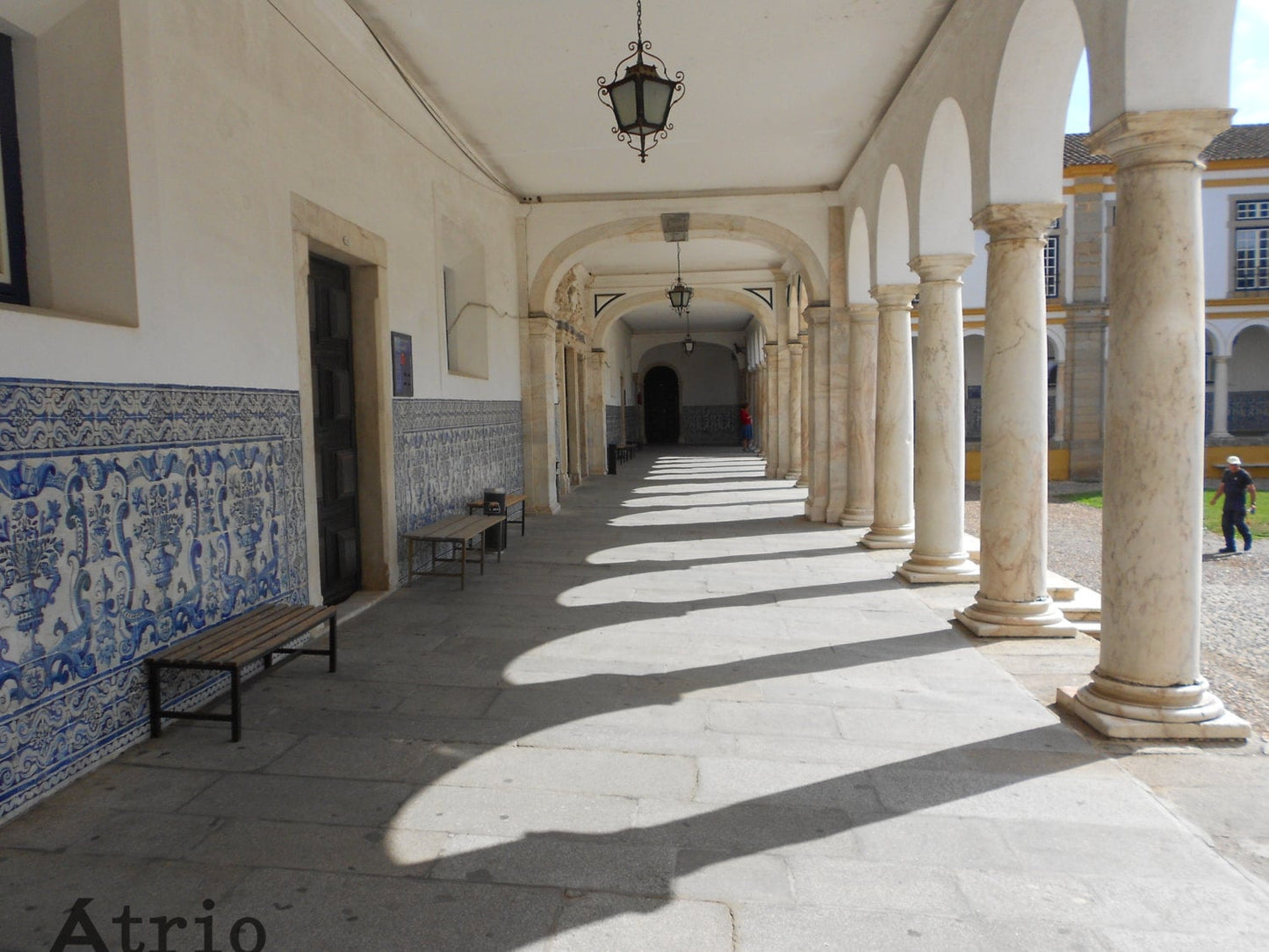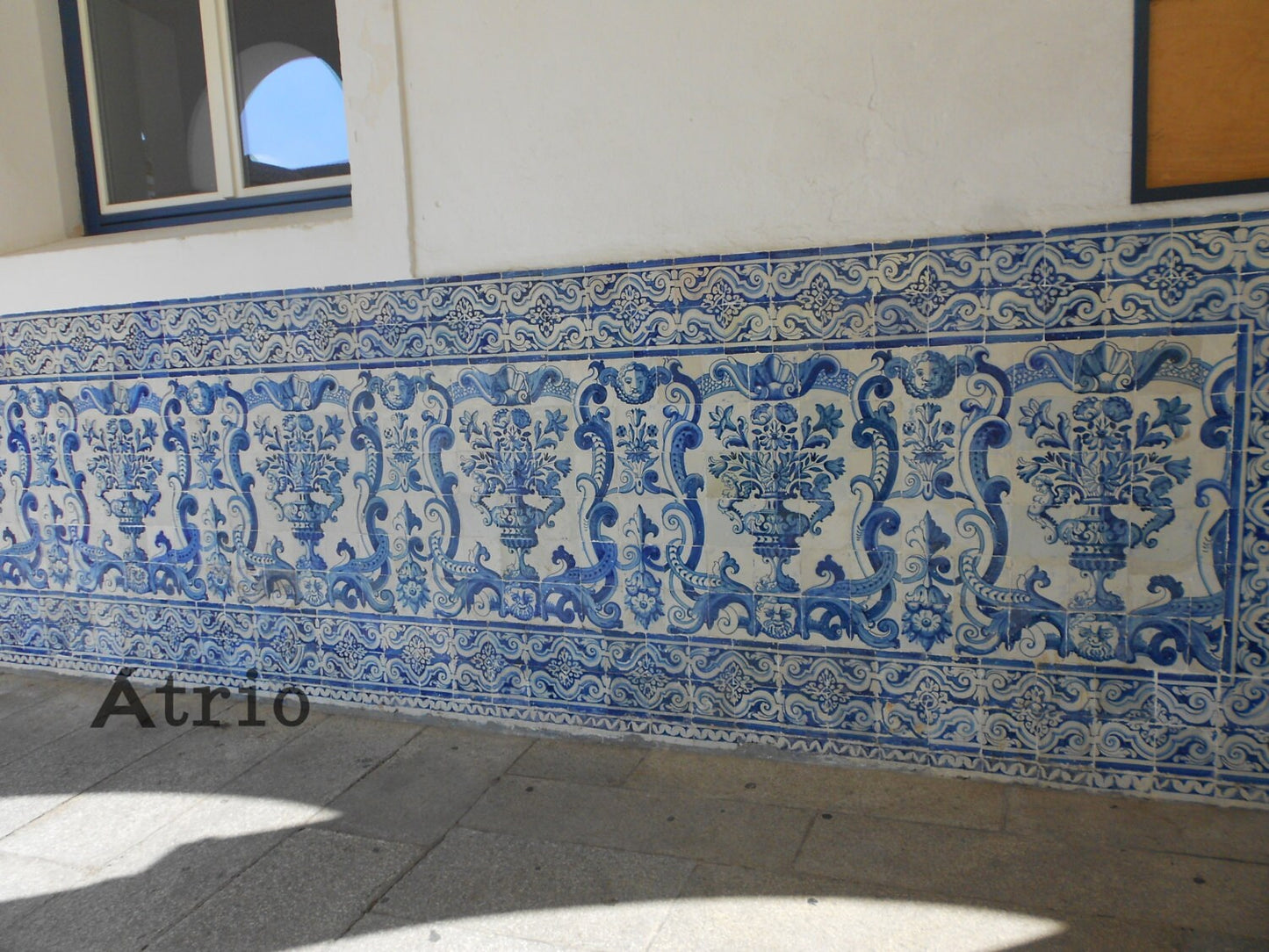My Store
STUD Earrings Portugal Tile Atrio SOLID Stainless Steel Azulejo University of Évora founded in 1559 Hypo allergenic 700 Small Gold Tone
STUD Earrings Portugal Tile Atrio SOLID Stainless Steel Azulejo University of Évora founded in 1559 Hypo allergenic 700 Small Gold Tone
Couldn't load pickup availability
Sweet 9mm square Portuguese Tile Stud Post Earrings in solid stainless steel and hypoallergenic. They have an inlay of an antique Portuguese Azulejo Tile Replica to remind you of your travels. They make perfect gifts for your friend, mother, sister, coworker, grandmother, daughter, granddaughter or for yourself! They come in a gift box!
🌺ATTENTION: We will not be shipping from November 1 to November 7. Shipping will resume on the 8th. Heading west to visit our granddaughter for a few days! 🌺
Use this link to find all of our STUD earrings https://www.etsy.com/shop/Atrio?section_id=29230630
WEAR A PIECE OF HISTORY!
QUESTION: Are your tiles real antique Portuguese Azulejo tiles?
ANSWER: Absolutely not. In our description of each item, we try to call attention to the theft and destruction of antique Portuguese tiles. Even the tiles found in flea markets and antique stores were most likely stolen off a building during the night. We have seen entire home facades disappear during the night to thieves. Thankfully, Portugal just passed a law declaring this theft a crime. We can only hope that it will one day be enforced.
For this reason, we have no part in this despicable crime. We make our own tiles from polymer clay. Ceramic would be far too heavy for earrings and impossible to mold into the shapes we want. For the hoops, we mold the clay as thin as we can get it, so that it will look pretty inside the hoops.
QUESTION: What kind of metal is it?
ANSWER: SOLID STAINLESS STEEL
If it is gold tone, it has a real gold wash. It is not gold plated. Stainless steel is hypoallergenic and nickel free.
The Blue tiles are from the University of Evora inner courtyard. This university is the 2nd oldest university in Portugal founded in 1559. Every room is covered with amazing tile murals. Gorgeous and in perfect condition!
The earrings are 9mm square and they have Solid stainless steel posts. They will come in a gift box. So Sweet!
Wear a Piece of History!
According to the World Heritage Convention:
This museum-city, whose roots go back to Roman times, reached its golden age in the 15th century, when it became the residence of the Portuguese kings. Its unique quality stems from the whitewashed houses decorated with azulejos and wrought-iron balconies dating from the 16th to the 18th century. The Historic Centre of Évora, capital of the Alentejo Province, Portugal, has been shaped by more than twenty centuries of history, going as far back as Celtic times. It fell under Roman domination and still retains, among other ruins, those of the Temple of Diana. During the Visigoth period, the Christian city occupied the surface area surrounded by the Roman wall, which was then reworked. Under Moorish domination, which came to an end in 1165, further improvements were made to the original defensive system as shown by a fortified gate and the remains of the ancient Kasbah. There are a number of buildings from the medieval period, the best known of which is the Cathedral that was completed in the 13th century. But it was in the 15th century, when the Portuguese kings began living in Évora on an increasingly regular basis that Évora’s golden age began. At that time, convents and royal palaces sprung up everywhere: St Claire Convent, the royal church and convent of São Francisco, not far from the royal palace of the same name, and Os Lóios Convent with the São João Evangelista Church. These are remarkable monuments that were either entirely new buildings or else constructed within already existing establishments, and which are characterised by the Manueline style that survived in the major creations of the 16th century.
When the University of the Holy Spirit, where the Jesuits taught from 1553 onwards, was established, Évora became Portugal’s second city. However, the university’s rapid decline began following the expulsion of the Company of Jesus by minister Marquis of Pombal, in 1759.
Évora is also remarkable for reasons other than its monumental heritage related to significant historic events. The 16th century was a time of major urban planning and great intellectual and religious influence. While Évora also has many noteworthy 16th-century patrician houses (Cordovil house, the house of Garcia de Resende), the unique quality of the city arises from the coherence of the minor architecture of the 16th, 17th and 18th centuries. This unity finds its overall expression in the form of numerous low whitewashed houses, decorated with Dutch tiles and wrought-iron balconies and covered with tile roofs or terraces which line narrow streets of medieval configuration and which in other areas bears witness to the concentric growth of the town until the 17th century. It also served to strengthen the fundamental unity of a type of architecture that is perfectly adapted to the climate and the location.
Évora remained mainly undamaged by the great earthquake of 1755 that destroyed many towns in Portugal, including Lisbon. The monuments of the Historic Centre of Évora bear witness to their profound influence on Portuguese architecture in Brazil.
Please feel free to email me with any questions you may have.
Thank you,
Atrio
🌺 CLICK here to return to my shop:
https://www.etsy.com/shop/Atrio
🌸 Favorite our shop for updates
🌿 Follow us on Instagram @atrio_azulejos
🌿Follow us on Facebook https://www.facebook.com/o.Atrio/
+All items will come in a gift box ready for gift giving.
🌺Please find our large selection of Portuguese FILIGREE at atriotiles.com
Although the tiles are water resistant, care should be taken to keep the tiles and metal out of water and away from lotions, including cosmetics, sunscreen, hairspray, etc. The chemicals in these products will dull the finish on the tiles.
There is a 5% RESTOCKING fee for returned items.
🌸
The term Azulejo or Tile dates back to the time of Arab occupation of the Iberian Peninsula. The term "azulejo is derived from the Arab word (al zulej) which means a smooth and polished stone. It wasn't until the 16th century that the process was perfected into the tile we know today.
🌸🌸🌸🌸🌸🌸
+ Please note that some of our items will come with a tag stating "Return only accepted if tag is attached". There are no exceptions to this policy. 🌺ATTENTION: There is a 5% RESTOCKING fee per item PLUS a $3.50 fee for returned items.
🌸🌸
Although the tiles are water resistant, care should be taken to keep the tiles and metal out of water and away from lotions, including cosmetics, sunscreen, hairspray, etc. The chemicals in these products will dull the finish on the tiles.
🌸🌸🌸
All my tiles are replicas made of polymer clay where the image actually becomes part of the clay through baking. No glue is used in the process. The pieces become waterproof and scratch resistant. Due to the handmade and hand shaped nature of each tile, slight variations will occur, as no two pieces are alike.
🌸🌸🌸🌸
Wear a Piece of History!
Share










